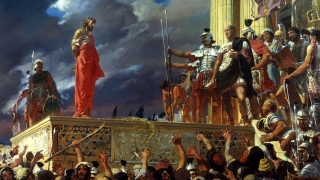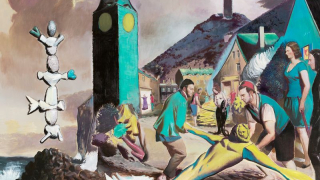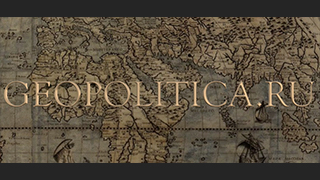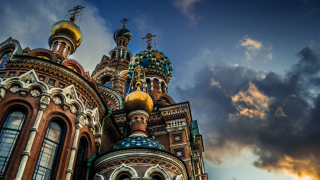The West Is Sick but Thinks She Is Healthy
An Orthodox priest murdered by the Soviets, Father Pavel Florensky, wrote a few words that are very relevant for the West today:
‘In its extreme, the state of Pharisaism is a spiritual delusion, where a certain state becomes an idol. At the same time it is a very close imitation of what is genuine. And once a person has entered into this circle, there is no way out, since even an errant prayer gives joy and a feeling of satisfaction, while feeding all the other feelings, pride, conceit, arrogance, etc., so that the more his soul is filled with this tinsel glitter, the greater will be his desire to pray and the more obstinate he will be in his error and convinced of his righteousness. And only a miracle, which is what a deep fall usually is, can open his eyes and show him how far he has gone in his error. This helps to explain the aphorism of Amvrosy of Optina, which he stated as a rule for young monks: “Do not be afraid of any sin, even fornication; rather, be afraid of fasting and prayer (At the Crossroads of Science & Mysticism, Boris Jakim, ed. & trans., Kettering, Ohio, Semantron Press, 2014, pgs. 114-5).”’
This is a very accurate description of the current state of the West, which is trapped in the prideful delusion that the various ideologies she has spawned – liberalism, Papism, Protestantism, transhumanism, etc – are the most flawless constructs with which the world has ever been blessed. And this arrogance causes her to force these false and harmful teachings and ways of living onto other peoples.
A perfect incarnation of this deluded Western attitude is found in the life of Thérèse of Lisieux (1873-1897), a young French woman canonized by the Roman Catholic Church and highly venerated by its members. She is described rather glowingly in an essay by Dr Cicero Bruce:
‘ . . . [O]n the occasion of Thérèse’s profession of faith . . . , Thérèse wrote a customary letter addressed to the Eternal Groom, in which she implored “Jesus, my Divine Spouse,” to allow her to die a martyr: “Give me martyrdom of heart or body, or rather give me both.” Her wish was apparently granted, for after having lived as a Carmelite for less than a decade, Sr. Thérèse of the Child Jesus and of the Holy Face, also known as the “Little Flower,” died on September 30, 1897, after a brief life of 24 years and a prolonged illness from tuberculosis, the agonizingly painful torments of which she refused to alleviate with readily available morphine, preferring the “narcotic promise of Christ,” as Harrison puts it, and believing, in Bro’s words, “that the least of her sufferings, offered with love, could save a soul.” Twenty-six years after her death, Thérèse was beatified, and, in 1925, her sainthood was proclaimed in the speediest canonization to date in the history of the Catholic Church.
‘ . . . Bro depicts the life of a magnanimous soul whom Pope Pius X called the “greatest saint of modern times,” a soul whose passion for Christ was so violent that she “threw her whole life off-center,” and whose recorded words and deeds “move us off center and oblige us to find our bearings once again” in the whirl of time.’
This is the view of Miss Thérèse in the contorted view of the West: She is an angel, the ‘greatest saint of modern times’. But how does she appear to those who have not departed from the way of the Apostles? Dr Alexei Osipov, a professor of theology and an Orthodox Christian, shows us her true nature in his essay ‘Why Are We Orthodox?’. He says,
‘Yet another illustration of sanctity in Catholicism is Therese of Lisieux ("The Little Flower," or "Of the Child Jesus"), who, in 1997, the centennial of her repose, was proclaimed a Doctor of the Church by the "infallible" decision of Pope John Paul II. Here are several quotes from the spiritual biography of Therese, who only lived to the age of twenty-two, which eloquently witness to her spiritual state (The Story of a Soul [Paris, 1996]).
‘"During a conversation before my tonsure, I gave a report of the activities I intend to undertake in Carmel. ‘I came to save souls, and first of all, to pray for priests.'” Not having saved herself yet, she came to save others!
‘She seemingly writes about her unworthiness, but then adds, '"I always harbor the bold hope that I will become a great saint.… I thought that I was born for glory, and sought a path to its accomplishment. And the Lord God … revealed to me that my glory would not be visible to the mortal gaze, and the essence of it consisted in the fact that I would become a great saint!” (See St. Macarius the Great, who was called by his co-ascetics "an earthly god," who only prayed, "God cleanse me a sinner, for I have never done anything good in Thy sight.") Later Theresa writes something even more frank: "In the heart of my Mother the Church I will be Love … then I will be everything … and through this my dream will come true!”
‘This teaching of Therese's about spiritual love is telling in the extreme. "This was the kiss of love. I felt beloved and said, ‘I love You and entrust myself to You forever.' There was neither forgiveness, nor struggle, nor sacrifice; already, long ago, Jesus and little, poor Theresa looked at each other and understood everything.… This day brought not an exchange of views, but a mingling, when there are no longer two; and Theresa disappeared like a drop of water lost in the depths of the ocean." There is no need to comment on this dreamy romance of a poor girl, who the Catholic Church has—alas! called its "Doctor."’
The pride and arrogance of Miss Thérèse are overwhelming and frightening and most unfortunate, but this explains why she is so much loved in the fallen West – She is the perfected image of its false beauty, a self-deified saint, the simulacrum of holiness. She is the embodiment of what the modern West wants to accomplish: to achieve Godlikeness apart from God, to attain greatness without humility, and so on.
But it is not enough simply to criticize the West. She needs healing. She needs true examples of holiness to imitate, to pray to, to be her friends and guides. One such exemplar of Orthodox holiness is St Irene of Chysovalantou (+912). It is written of her,
‘"Saint Irene, who was from Cappadocia, flourished in the ninth century. Because of her great beauty and virtue, she was brought to Constantinople as a prospective bride for the young Emperor Michael (8422-867); however, as St Joannicius the Great foretold, it was God's will that she assume the monastic habit instead. She shone forth in great ascetical labors, and suffered many attacks from the demons; while yet a novice, she attained to the practice of St Arsenius the Great, of praying the whole night long with arms stretched out towards Heaven (see May 8). God showed forth great signs and wonders in her, and she became the Abbess of the Convent of Chrysovalantou. She was granted the gift of clairvoyance and knew the thoughts of all that came to her. She appeared in a vision to the king and rebuked him for unjustly imprisoning a nobleman who had been falsely accused. Through a sailor from Patmos to whom he had appeared, St John the Theologian sent her fragrant and wondrous apples from Paradise. She reposed at the age of 103, still retaining the youthful beauty of her countenance. After her repose, marvellous healings beyond number have been wrought by her to the present day." (Great Horologion)’
The following is noteworthy as well:
‘Although Saint Irene performed many miracles during her life, let us mention only one. On great Feasts it was her habit to keep vigil in the monastery courtyard under the starry skies. Once, a nun who was unable to sleep left her cell and went into the courtyard. There she saw Abbess Irene levitating a few feet above the ground, completely absorbed in prayer. The astonished nun also noticed that two cypress trees had bowed their heads to the ground, as if in homage. When she finished praying, Irene blessed the trees and they returned to their upright position.
‘Afraid that this might be a temptation from the demons, the nun returned the next night to see if she had been mistaken. Again she saw Irene levitating as she prayed, and the cypress trees bowing down. The nun tied handkerchiefs to the tops of the two trees before they went back to their places. When the other sisters saw the handkerchiefs atop the trees, they began to wonder who had put them there. Then the nun who had witnessed these strange events revealed to the others what she had seen. When Saint Irene learned that the nun had witnessed the miracle and told the others, she was very upset. She warned them not to speak of it to anyone until after her death.’
St Irene, and the saints of the West, both women and men, prior to her break with the Orthodox Church in 1054 – St Brigid of Kildare, St Audrey of Ely, St Cuthbert of Lindisfarne, St Paraskeve of Rome, and many others, all show what is possible for a person who is truly meek and humble and dedicated to the Truth: miracles, powers that defy the normal laws of nature, healings, eating foods from Paradise, etc.
As long as the West remains devoted to lies, she will continue chasing shadows: transhumanism, democracy, rewriting human genetics in order to obtain perfect health and defeat death; she will continue to honor deluded, unbalanced people; and she will continue trying to force the rest of the world to conform to her demonically inspired vision of the good life.
But the Orthodox saints are always calling out to her to change her mind.














